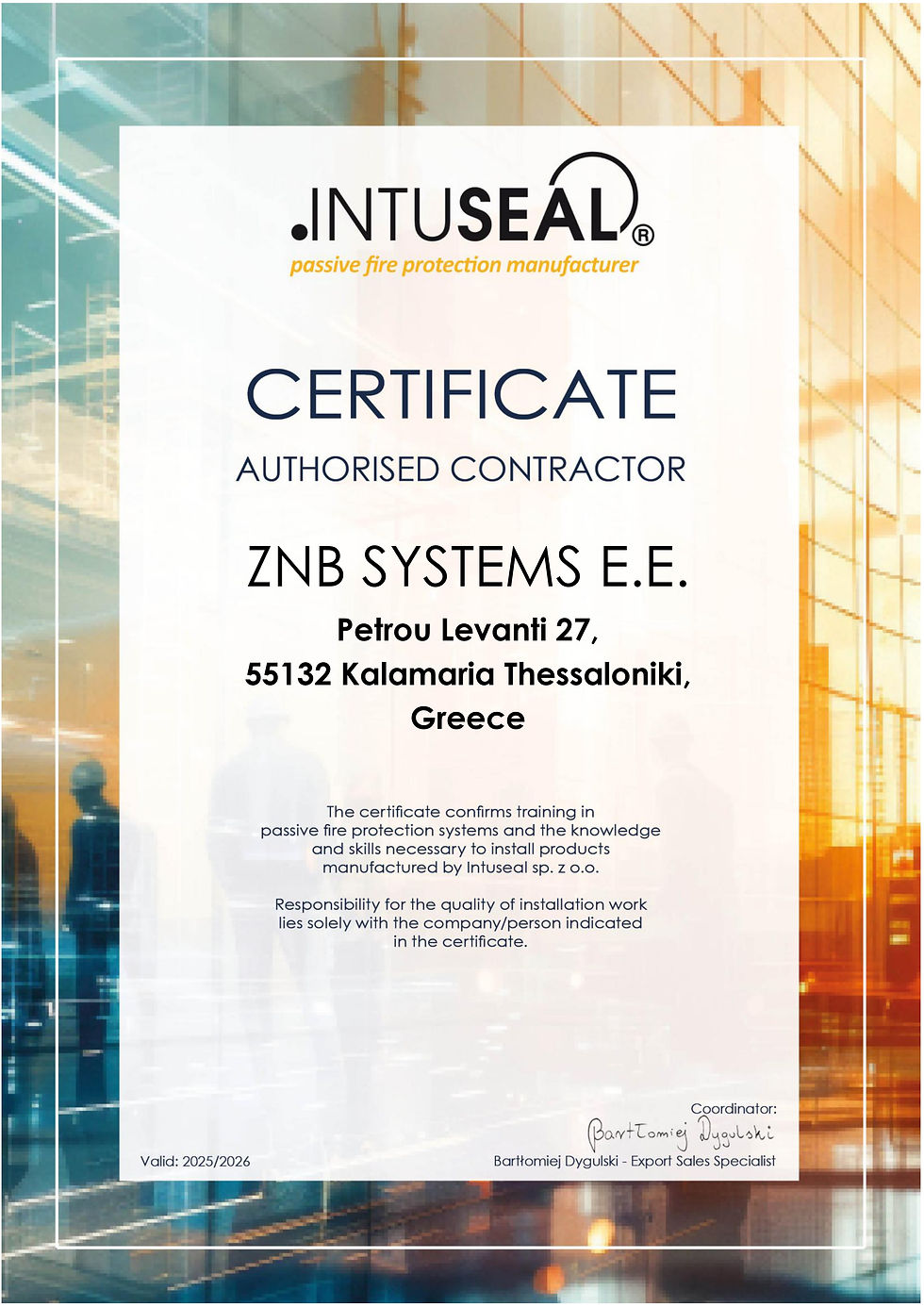Home > Penetration Firestops > Mixed Penetration Firestops
Certified Firestop Solutions for Mixed Penetrations with MARVON Systems
TECNOBRICK
Spongy intumescent polyurethane brick by Marvon, ideal for sealing irregular or multiple penetrations.
Easily moldable, allows future access, and provides fire resistance up to EI240

TECNOBOARD + TECNO-S
Combined solution with fire-resistant board and acrylic sealant for perimeter protection in complex penetrations.
Suitable for walls and floors, with the ability to be applied to irregular shapes.

TECNOCOLLAR
Intumescent ring installed on pipes within mixed penetrations.
Combined with TECNOBOARD or TECNO-S for complete sealing of the opening.
Certified up to EI240 according to EN 1366-3.

TECNOGRAPHIT
Two-component polyurethane foam with graphite, suitable for filling gaps around pipes and cables.
It expands when exposed to fire and seals the opening.
Provides fire resistance up to EI180.

TECNOWRAP + TECNOBOARD
Intumescent tape combined with fire-resistant board for applications involving plastic pipes alongside electrical components.
Suitable for penetrations with multiple variables.

Types of Mixed Penetrations Covered

Plastic or metal pipes combined with cables
A very common case in technical shafts or false ceilings, where different networks pass through a shared opening.
A combined firestop solution for both pipes and cables with unified protection is required.
Electrical conduits and cable bundles in the same penetration
PVC electrical conduits or metal tubes are often accompanied by cable bundles.
Their protection requires flexible and intumescent materials to ensure complete coverage and tightness.
Cables and pipes in trays or common ducting
When cables and pipes pass together through trays or ducts, complex penetrations are created.
Firestopping is applied around the entire bundle using Marvon pillows or bricks.
Multiple elements in a shared opening
In cases where pipes, conduits, and cables pass together through the same opening, combined fire protection is required using different materials simultaneously, such as TECNOBOARD, TECNOBRICK, and TECNO-S.
Large or irregular openings
Penetrations with openings larger than usual or irregular shapes require flexible solutions such as TECNOBRICK intumescent bricks or TECNOBAG pillows to fill every gap.
Existing installations without firestopping
In many older projects, proper firestopping was not initially planned.
Special systems, such as graphite foams or removable products, can be applied without the need to remove existing installations.

Mixed Penetration Firestops
Mixed penetrations occur when pipes, cables, or other MEP (mechanical, electrical, plumbing) networks pass simultaneously through the same opening, creating specific fire protection challenges.
At ZNB Systems, we offer certified firestop solutions for mixed penetrations using Marvon products, covering all scenarios that do not fall into the simple categories of cables or pipes
Authorised Contractors
Certified by our suppliers for the proper installation of passive fire protection systems.



Frequently Asked Questions about Mixed Penetration Firestops
A penetration is considered mixed when more than one different installation network, such as pipes and cables, pass through the same technical opening. These complex cases require special handling and firestopping with multiple compatibility.
Yes. All the solutions we offer for mixed penetrations are certified according to EN 1366-3, with fire resistance up to EI240, depending on the composition and geometry of the opening.
In such cases, combined materials are used, such as TECNOBRICK, TECNOBAG, TECNOBOARD with TECNO-S, or graphite foam TECNOGRAPHIT, depending on the type and density of the networks.
For large or non-standard penetrations, flexible solutions such as TECNOBRICK intumescent bricks or TECNOBAG pillows are recommended, which can easily adapt to the specific gap.
Of course. There are solutions that allow installation without removing cables or pipes, such as removable pillows or expanding foams applied around existing elements.
The selection should be based on the type of installations passing through, the geometry of the opening, and the required fire resistance. Ideally, solutions that have been tested with combined materials and offer flexibility in application are used.

